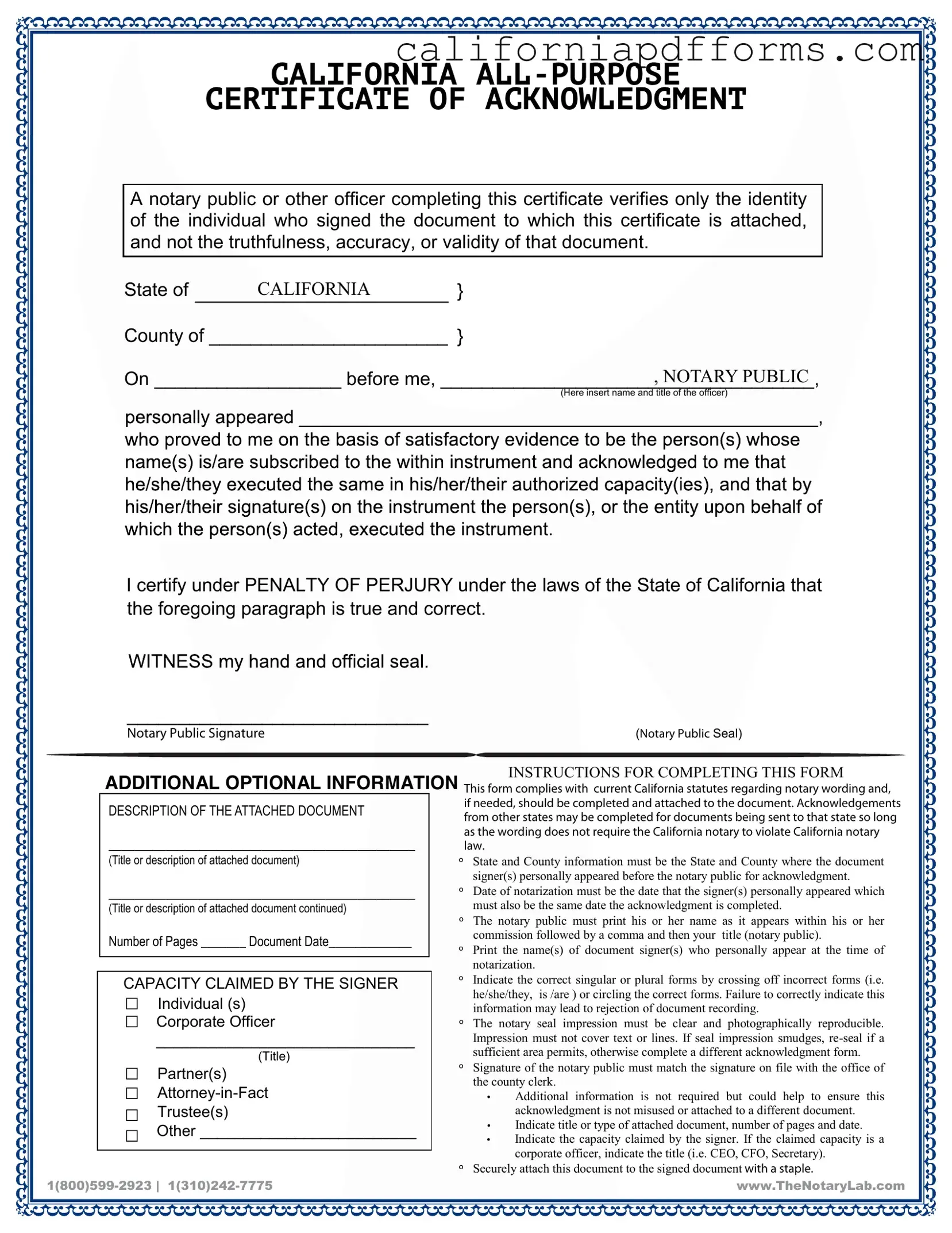Download California Acknowledgement Certificate Form
The California Acknowledgment Certificate form is a document used by notaries public to verify the identity of individuals who sign legal documents. This certificate confirms that the signer appeared in person before the notary and acknowledged their signature on the attached document. To ensure proper completion, follow the instructions provided and fill out the form by clicking the button below.
Open Your Form Online
